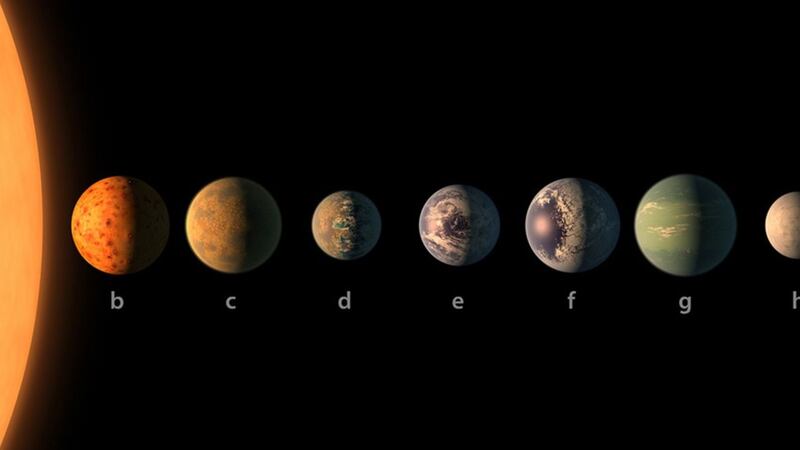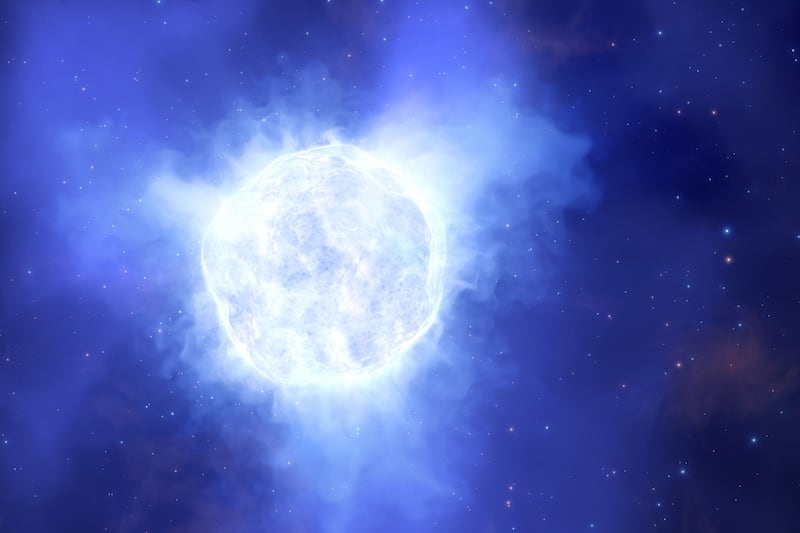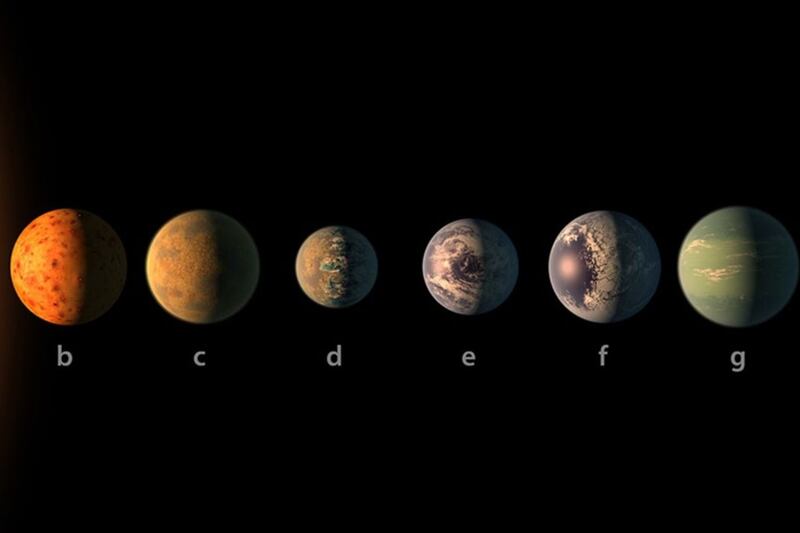A frozen planet in a nearby solar system may have been warm and habitable for hundreds of millions of years, scientists believe.
Astronomers made the discovery after studying the orbits of seven planets circling Trappist-1, a cool dwarf star 40 light years away in the constellation Aquarius.
The outermost planet, Trappist-1h, is currently an ice ball with an average surface temperature of minus 100C – but new research suggests this may not always have been the case.
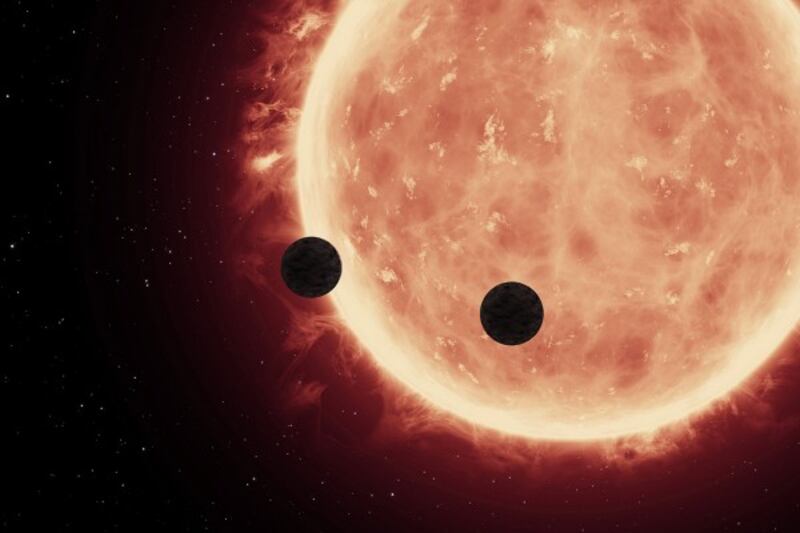
The scientists found that the star’s planets were gravitationally linked in a complex dance known as “orbital resonance”, which was probably forged early in the life of the system.
Tracing back the history of Trappist-1h, they showed that the planet was likely to have spent several hundred million years in a much warmer state when its host star was younger and brighter.
Lead researcher Rodrigo Luger, a doctoral student at the University of Washington in the US, said: “We could therefore be looking at a planet that was once habitable and has since frozen over, which is amazing to contemplate and great for follow-up studies.”
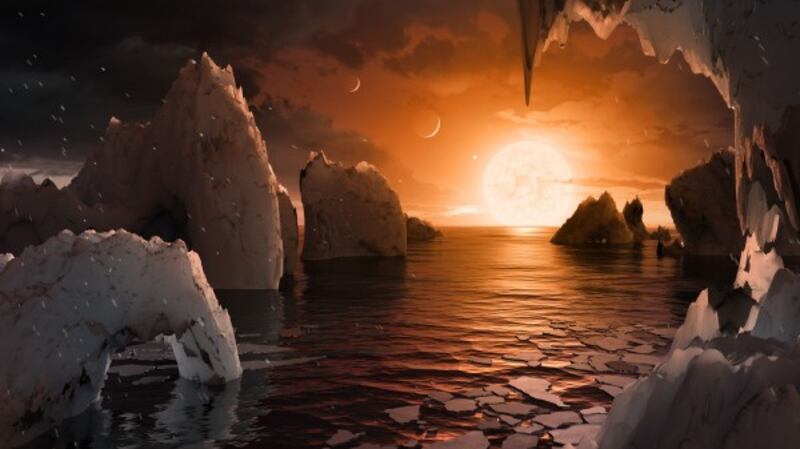
The research is based on data gathered by Nasa’s Kepler Space Telescope.
Three more of Trappist-1′s planets appear to lie within the star’s habitable zone, the orbital band within which temperatures are mild enough to permit liquid surface water and possibly life.
The study is published in the journal Nature Astronomy.
